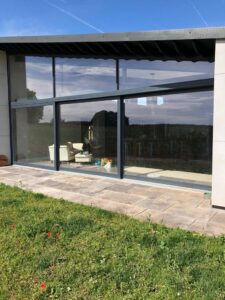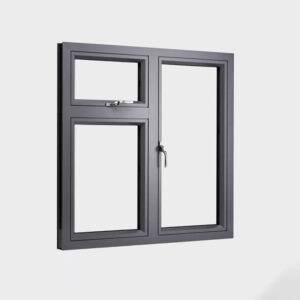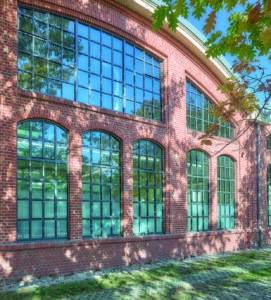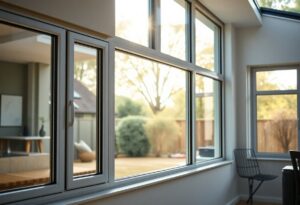Indoor condensation can lead to a range of problems, including mould growth, structural damage, and severe health issues for you and your family. In R2 systems, effectively managing moisture levels is important for creating a healthy living space. This blog post will explore various strategies to help you control condensation, ensuring that your indoor environment remains comfortable and safe. By implementing these techniques, you can significantly improve air quality and protect your property from the long-term effects of dampness.
Understanding R2 Systems
A comprehensive understanding of R2 systems can significantly enhance your indoor environment. These systems, which combine heating, ventilation, and air conditioning, are pivotal in managing moisture levels. By controlling (PDF) Enhancing Indoor Environmental Quality in the Post- …, you ensure that your indoor air quality remains optimal, thereby promoting a healthier living space.
Overview of R2 Systems
Understanding R2 systems involves recognising their role in ensuring comfort and air quality. These systems effectively manage temperature and humidity, directly impacting your health and well-being.
Importance of Indoor Air Quality
Indoor air quality is paramount for your overall health. It can significantly affect your comfort, productivity, and well-being in your living or working space.
Even when you may not notice it, the air quality in your home can be compromised by pollutants and excess moisture, leading to potential health risks such as respiratory issues and allergies. Poor indoor air quality can also decrease your overall productivity and comfort. Therefore, maintaining a good balance through R2 systems is necessary to ensure a safe and healthy environment.
Causes of Condensation in R2 Systems
The primary causes of condensation in R2 systems include high humidity levels and temperature variations. High moisture content can lead to water droplets forming on surfaces, which in turn creates unhealthy indoor environments. For guidance on managing moisture, you can visit Moisture Control.
Humidity Sources
Beside external weather conditions, your daily activities contribute significantly to indoor humidity. Sources such as cooking, showering, and even breathing release moisture into the air. It’s vital to address these sources to maintain a balanced indoor climate.
Temperature Fluctuations
Systems that experience frequent temperature fluctuations are more prone to condensation. This is because warm air holds more moisture, and when it contacts cooler surfaces, the moisture can condense, leading to potential issues. Understanding these dynamics is vital for effective condensation control.
Temperature Fluctuations
| Factors | Effects |
|---|---|
| External Weather | Can cause rapid temperature changes that stimulate condensation. |
| Heating and Cooling Cycles | Regular cycles can further lead to surfaces being intermittently cool. |
| Insulation Quality | Poor insulation can exacerbate temperature differences. |
And, the effects of temperature fluctuations are significant. When you encounter high indoor warmth from heating, and then suddenly cool the space, the warm air’s moisture condenses upon the suddenly cold surfaces. This process can lead to the growth of mould and damaged property over time. It’s vital to ensure that your environment is kept at consistent temperatures to mitigate these risks.

Strategies for Effective Condensation Control
There’s a myriad of strategies to effectively manage condensation, ensuring a healthier indoor environment. Implementing proper measures can significantly enhance your space’s quality and comfort. For further insights, refer to Energy Savings With Acceptable Indoor Air Quality, which provides valuable guidance on optimising your indoor climate.
Enhanced Ventilation Practices
By adopting enhanced ventilation practices, you can significantly reduce moisture levels in your home. Ensuring that areas prone to dampness, such as kitchens and bathrooms, are properly ventilated helps to maintain a balanced indoor climate and minimise condensation occurrences.
Insulation and Thermal Barriers
Strategies involving insulation and thermal barriers play a pivotal role in condensation control. Proper insulation reduces heat flow, maintaining the temperature of your walls and ceilings. This, in turn, diminishes the likelihood of condensation forming on cooler surfaces.
For instance, employing high-quality thermal barriers not only prevents heat loss but also reduces the risk of mould growth, which can significantly impact your health. Using insulation materials that offer a high resistance to moisture can create a more stable indoor environment, helping to protect your dwelling from potential damage and ensuring that energy efficiency is maximised. Implementing these strategies will provide you with a more comfortable and healthier indoor atmosphere.
Dehumidification Techniques
Now, effectively managing humidity in R2 systems calls for a variety of dehumidification techniques. These methods aim to reduce moisture levels to enhance indoor air quality and protect your property from potential damage. By implementing these strategies, you can achieve a healthier environment, ultimately benefiting your well-being and comfort.
Mechanical Dehumidifiers
Beside traditional HVAC systems, you may find mechanical dehumidifiers highly effective. These devices work by drawing in humid air, cooling it, and collecting the condensed moisture in a reservoir. They are particularly useful in spaces prone to excess humidity, ensuring your indoor environment remains comfortable and damp-free.
Natural Dehumidification Methods
Dehumidifiers can also be classified as natural methods that promote moisture evaporation and absorption. Utilising materials like silica gel or certain types of clay can help draw moisture from the air. Integrating proper ventilation can also assist in removing damp air, ensuring your living space remains pleasant by lowering humidity levels without relying solely on electricity.
Also, natural dehumidification methods can be highly effective in maintaining a healthy indoor environment. Options such as ventilation help ensure fresh air circulates while reducing trapped moisture. Additionally, using desiccants like rock salt or baking soda can absorb excess water vapour. Incorporating these practices not only fosters a more comfortable atmosphere but also contributes to optimising your air quality and safeguarding your property’s integrity.

Monitoring and Maintenance
Unlike many other systems, R2 systems require a proactive approach to monitoring and maintenance to ensure the indoor environment remains healthy. Regular checks can help you identify potential condensation issues before they escalate, allowing you to maintain optimal comfort and air quality in your space.
Regular Inspections
Across your premises, regular inspections play a vital role in detecting early signs of condensation. By observing areas prone to moisture buildup, you can take timely action to mitigate the risks, ensuring a healthier environment for you and your occupants.
Innovative Monitoring Tools
Before implementing a condensation control strategy, consider utilising innovative monitoring tools that provide real-time feedback on humidity levels. These tools can help you track changes and respond promptly to any potential issues, significantly improving your environmental conditions.
Due to advances in technology, innovative monitoring tools now offer enhanced capabilities, such as real-time humidity tracking, automated alerts, and comprehensive analytics. These features empower you to act swiftly when moisture levels fluctuate, decreasing the likelihood of mould growth and maintaining peak air quality. By leveraging such tools, you can ensure that your maintenance strategies are both effective and efficient, creating a safer and more comfortable indoor space.
Benefits of Condensation Control
Many homeowners underestimate the importance of managing condensation within R2 systems. By effectively controlling condensation, you can significantly enhance your indoor environment. This leads to improved air quality, reducing the risk of mould growth and its associated health issues, while also promoting a more comfortable living space. Furthermore, you can extend the lifespan of your heating and cooling systems, leading to savings on energy bills and maintenance costs.
Improved Health Outcomes
Health risks associated with excessive condensation include respiratory problems and allergies. By maintaining optimal moisture levels in your indoor environment, you can minimise the growth of harmful mould and dampness, ultimately leading to a healthier living space for you and your family.
Increased System Efficiency
At the same time, when you effectively control condensation, you boost the efficiency of your heating, ventilation, and air conditioning systems. This not only enhances your overall comfort but also reduces energy consumption.
This increase in efficiency is vital for your systems. When condensation levels are kept in check, your heating and cooling units operate more smoothly, reducing the strain on their components. Consequently, this results in lower energy costs and fewer breakdowns. Over time, you can notice a decrease in maintenance expenses, as your systems are less likely to suffer from issues associated with excessive moisture, thus enhancing their longevity and performance.
Final Words
Taking this into account, effective condensation control in R2 systems is necessary for ensuring a healthier indoor environment. By implementing strategies such as optimal ventilation, maintaining appropriate temperature levels, and utilising dehumidifiers, you can significantly reduce the risks associated with excess moisture. This not only enhances your comfort but also helps protect your property from damage and promotes better air quality for you and your loved ones. Prioritising these measures will lead to lasting benefits in your indoor spaces.
FAQ
Q: What is condensation control in R2 systems and why is it important?
A: Condensation control in R2 systems refers to the strategies and methods used to manage moisture levels within indoor environments. Effective condensation control is important as it prevents the formation of mould, promotes a healthier indoor air quality, and helps preserve the structural integrity of buildings. By reducing excess moisture, condensation control contributes to a more comfortable atmosphere and can enhance the longevity of the building’s materials.
Q: What are some common strategies for managing condensation in R2 systems?
A: Common strategies for managing condensation in R2 systems include proper insulation of surfaces to reduce cold spots, improving ventilation to facilitate moisture removal, and using dehumidifiers to maintain appropriate humidity levels. Additionally, employing temperature control measures, such as maintaining a consistent indoor temperature, can also help mitigate condensation risks.
Q: How can building occupants contribute to effective condensation control?
A: Building occupants can contribute to effective condensation control by practising good moisture management habits. This includes ensuring proper use of heating and ventilation systems, minimising the production of moisture through activities like cooking and showering, and reporting any signs of dampness or mould to property management. Encouraging the use of exhaust fans in high-humidity areas, such as kitchens and bathrooms, also plays a significant role.
Q: What are the signs that indicate condensation issues in an R2 system?
A: Signs of condensation issues in an R2 system include visible water droplets forming on windows or walls, the development of mould or mildew, the presence of a musty odour, and peeling paint or wallpaper. Additionally, if occupants frequently experience respiratory problems, it might indicate an underlying issue with moisture levels in the indoor environment.
Q: Are there specific materials that can help reduce condensation in R2 systems?
A: Yes, specific materials can aid in reducing condensation in R2 systems. Moisture-resistant paint, vapour barriers, and advanced insulation materials can help manage moisture levels effectively. Additionally, using breathable materials for walls and ceilings can allow moisture to escape, reducing the chances of condensation forming indoors.













